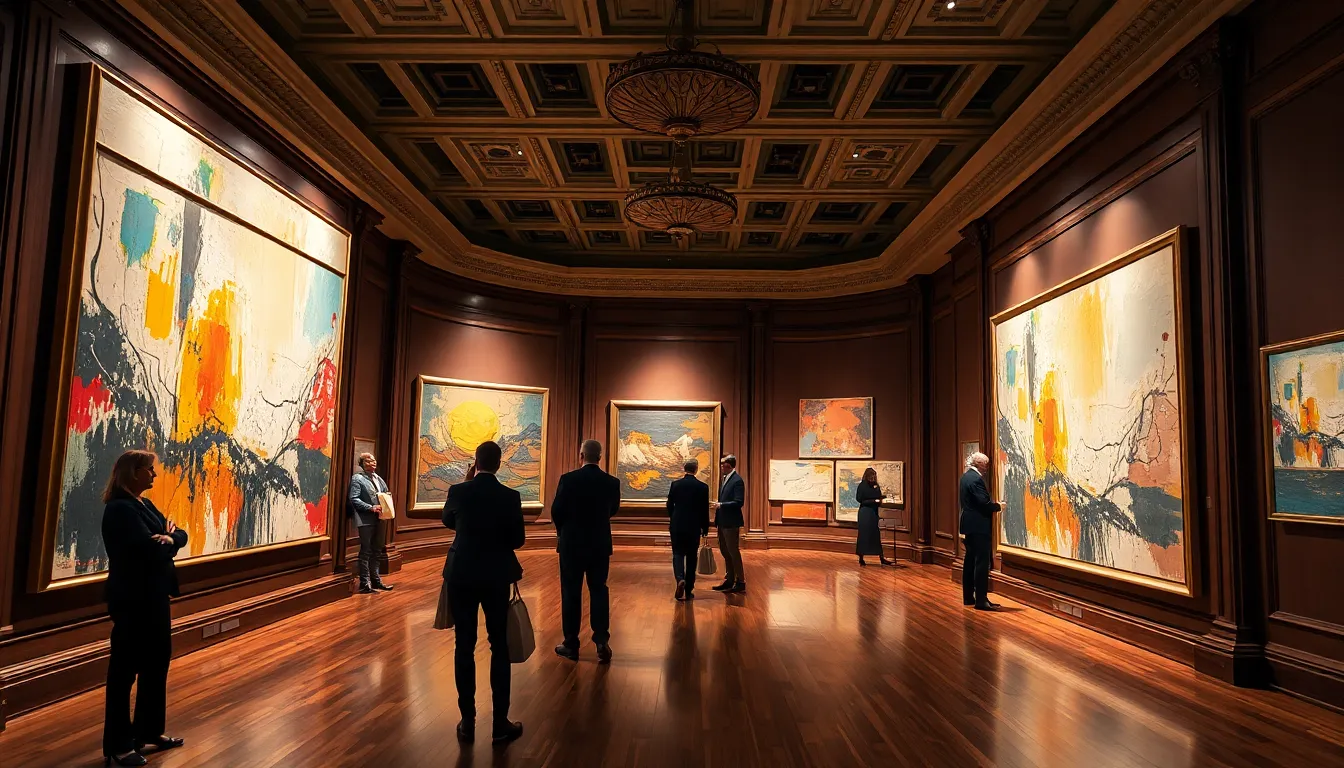In the dazzling world of modern art, where splashes of color and abstract forms reign supreme, a darker secret lurks beneath the canvas. Picture this: a wealthy collector buys a seemingly random piece of art for millions, while the rest of us scratch our heads, wondering if it’s really worth the price of a luxury car. But what if that price tag is just a clever ruse?
Table of Contents
ToggleUnderstanding Modern Art Money Laundering
Modern art money laundering involves using art transactions to disguise illicit funds. Collectors often pay inflated prices for artwork, creating opportunities for criminal activity.
Definition of Modern Art Money Laundering
Modern art money laundering refers to the practice of using the art market to conceal the origins of illegally obtained money. This technique allows criminals to convert cash into art pieces, which can later be sold or transferred to legitimize the funds. Art’s subjective value adds complexity, making it an attractive asset for laundering purposes.
Historical Context
Historical instances of art as a laundering tool span decades. The sale of artworks during the post-World War II era saw notable increases in questionable transactions. High-profile cases featuring wealthy collectors and auction houses emerged, bringing scrutiny to the art market. Regulatory agencies later increased monitoring to address illicit activities, yet loopholes continue to persist today.
Methods of Money Laundering in Art

Various methods facilitate money laundering in the art market. High-value art transactions and the use of shell companies play significant roles in these illicit practices.
High-Value Art Transactions
High-value art transactions often mask the true origins of funds. Buyers frequently pay astronomical sums for abstract works, which may seem arbitrary to the untrained eye. A well-documented sale might appear legitimate while concealing the dubious background of the funds. Auction houses and galleries can contribute by allowing anonymity in bidding processes. Sellers exploit this by inflating prices without clear valuation benchmarks. In an art market where discretion prevails, large, cash-only purchases present ideal opportunities for laundering.
Use of Shell Companies
Shell companies serve as vital tools because they create layers of complexity in art transactions. By establishing these entities, criminals acquire artworks while obscuring their identities. Art purchased through shell companies can easily transfer across borders, complicating ownership tracking. Auctions and private sales involving these entities often lack sufficient scrutiny, enabling funds to appear legitimate. Additionally, intricate ownership structures hinder investigations, allowing launderers to move large sums of money undetected. This method exemplifies how the art market provides an appealing avenue for concealing illicit gains.
The Role of Art Market Players
Art market players significantly influence modern art money laundering dynamics. Their actions and decisions often facilitate illicit transactions that disguise the origins of unlawful funds.
Art Dealers and Auction Houses
Art dealers shape the landscape of high-value transactions. They often provide a platform that allows anonymity to buyers and sellers. Bidding processes in auction houses frequently make it difficult to trace ownership, opening doors for money laundering schemes. Some auction houses inflate prices without clear valuation benchmarks, leading to inflated art values. Transparency issues in the art market often create opportunities for illicit activities, making it essential for regulatory measures to address these vulnerabilities.
Collectors and Investors
Collectors and investors play a pivotal role in art money laundering. Their pursuit of prestigious pieces often prioritizes status over provenance. High-profile collectors may purchase artworks without rigorous background checks, enabling criminals to exploit these transactions. Investors seeking to diversify assets may inadvertently support money laundering if they overlook the origins of their acquisitions. Awareness among collectors regarding the implications of their purchases can foster a more transparent art market, reducing risks associated with illicit financial activity.
Legal Consequences and Regulations
Modern art money laundering poses significant legal challenges, prompting a complex web of regulations. Authorities monitor art transactions closely to prevent the flow of illicit money through the market.
Current Laws and Regulations
Multiple jurisdictions enforce laws targeting money laundering through art. The Financial Action Task Force outlines guidelines to enhance transparency in art transactions. In the United States, the Bank Secrecy Act requires certain art dealers to register and report suspicious activities. Art market participants must establish robust due diligence practices, ensuring origins of funds undergo scrutiny. Countries such as the UK and France are implementing similar measures, aiming to create a more accountable system. Regulatory bodies work to close identified loopholes, thus prioritizing compliance in art sales.
Notable Cases and Scandals
Several notable cases highlight the intersection of modern art and money laundering. A prominent scandal involved a high-profile auction house accused of facilitating transactions for a suspect linked to organized crime. Investigations revealed a network of shell companies obscured the true ownership of multi-million dollar artworks. Another case saw a wealthy collector charged with using art to launder funds from a fraudulent investment scheme. These instances emphasize the continual vulnerabilities within the art market, prompting changes in regulations and compliance mechanisms. Enhanced scrutiny of high-value transactions and auction practices seeks to address these ongoing challenges effectively.
The intersection of modern art and money laundering reveals a complex landscape where aesthetics meet illicit financial activity. As the art market continues to evolve, the need for transparency and regulation becomes increasingly crucial. Awareness among collectors and investors can play a significant role in mitigating the risks associated with art transactions.
By fostering a culture of accountability and vigilance, stakeholders can help ensure that the art world remains a space for creativity rather than a conduit for crime. The ongoing dialogue around regulation and ethical practices will be essential in safeguarding the integrity of the art market for future generations.


